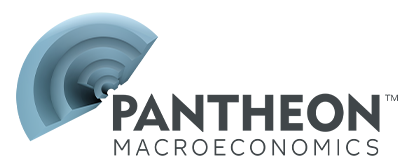China+ Publications
Below is a list of our China+ Publications for the last 5 months. If you are looking for reports older than 5 months please email info@pantheonmacro.com, or contact your account rep
Please use the filters on the right to search for a specific date or topic.
Daily Monitor Datanotes
- The Xi–Trump meeting in Korea marked a watershed shift in negotiating power between the US and China.
- The RatingDog manufacturing PMI eased, similar to the NBS, on weak demand both at home and abroad.
- China is betting on powering growth by both expanding consumption and maintaining its export prowess.
Investment stimulus should lift China's manufacturing index from October's trough
Tokyo inflation bump driven by local water subsidy expiry
In one line: BoJ stands pat amid trade uncertainty and wage caution as Takaichi takes helm
In one line: Bank of Korea hold rates in October as Seoul housing surges
- President Trump met PM Takaichi in Tokyo, marking the start of a new 'golden age' for US-Japan relations.
- The BoJ held rates in October, citing the ongoing trade uncertainty and need to monitor wage trends.
- A next hike in Q1 seems more probable now, as rhetoric teeing up a December move was lacking.
- President Xi’s commentary on Tuesday confirms an industry-first view of growth...
- ...with the domestic economy serving mainly as a hedge against external uncertainties.
- China will stick to manufacturing-led growth, with only modest support for domestic demand and property.
- China and the US held talks to settle a trade agreement framework before Presidents Xi and Trump meet.
- China’s industrial profits recovery broadened in September, partly due to base effects…
- …Equipment manufacturing drove profit gains; we remain cautiously optimistic on anti-involution policies.
In one line: BoJ won’t be shocked by modest rise in inflation; likely to hold rates next week waiting for clarity on the new government’s fiscal easing
- The BoK held the policy rate yesterday, while signalling its readiness for a rate cut next month...
- ...But only if the KRW stabilises, in turn resting on US-Korea talks, and if the Seoul property market cools.
- China’s Fourth Plenum signalled continued reliance on the manufacturing-export growth model.
- Japan’s new PM Takaichi will put together a stimulus package to alleviate households’ cost-of-living crisis.
- September exports trended higher on improving intra-regional demand, driven by chip and car shipments.
- The BoJ will likely delay its rate hike to December now that Ms. Takaichi has been appointed as the new PM.
- China’s quarterly GDP grew a touch faster in Q3, but the headline masks weakness in domestic demand.
- The divergence holds between stronger exports and production, and weaker retail sales and investment.
- China’s Q4 growth hinges on successfully reining in deflation and unclogging local financing bottlenecks.
- China’s loan growth slowed in September, indicative of weak credit demand, notably among corporates.
- M1 growth surged, but this likely reflects the robust stock market, rather than domestic demand reviving.
- The PBoC is likely to save policy rate cuts to stabilise sentiment if US-China trade frictions worsen severely.
In one line: China’s FX reserves edge higher, supported by portfolio inflows and persistently strong trade surplus.
In one line: Korea’s headline export surge masks WDA slump; Strong chip demand still underpins outlook.
In one line: Fimer Tankan readings pave way for BoJ policy normalisation in October.
In one line: Korean manufacturing activity surged in September on stronger orders and output.
In one line: Japan's wage growth slows again, with bonuses hit by tourism weakness
- Japan’s real household spending continued to rise in August, despite falling real incomes.
- Nominal wages took a hit, as bonuses plunged, notably in tourism-related sectors and manufacturing.
- The BoJ will be looking for clues about 2026 wage growth, but is also wary of recent JPY weakness.
- Ms. Takaichi’s win in Japan’s LDP leadership election reduces the likelihood of a BoJ hike in October.
- China’s FX reserves rose in September, fuelled by non-valuation effects, such as capital inflows.
- We think USD strength and the Fed’s rate path will be the key drivers of China’s FX reserves into early 2026.
In one line: China’s industrial profit rebound lacks breadth, with only seven industries show accelerating positive gains.
